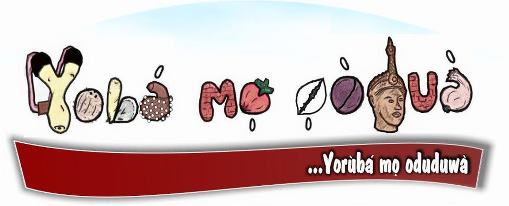The
cliche looking good is good business explains it all about fashion. And
when talking about fashion, Yoruba's are not left out because they are
fashionable people who love to make good fabrics as well as look good.
Who doesn't know that we have ọsan; day and orú: night on
earth, that some parts of the world is hot (ilẹ oloorù) while the other
is cold (ilẹ oloótútu). Its a natural phenomenon everything has an opposite. That is, everything on earth has ojú méji: a dual
phase as there are two sides to a coin. Yoruba land is in a hot terrain
so our cloths are made to suit the weather we have in Africa.
In
the olden days just like Adam & Eve, the Yoruba people were also
quick to notice their nakedness and then the ibàntẹ was invented to
cover the organs. This is why my people say "a i fẹ ni pe ni, a i fi èèyàn pe eyan, lo mu ara oko san ibàntẹ wọ ilú" Due to the availability
of igi owú: cotton seed and àwọ ẹran: animal skin/hide in Yoruba land,
our handwoven clothing is a pride to the ọmọ karọ ojíre and worth
boosting of.
The
owú is woven into aṣọ-òkè, aran and ofi fabric, and animal hides used
to make leather materials like footwear, sheaths. Aṣọ: fashion in the Yoruba
land serves many purposes, the first to cover the ihòhò: nude body and
ẹṣọ ara: to beautify the body. While some cloths are worn for special
engagements.
The
agbàlàgbà: adults have their own aṣọ while the ọmọdé: young ones have
theirs also. The men wears ẹwu: top like dàndógó, agbádá, gbáriyẹ,
súlia, ọyàlà, bùbá & dànsiki for the body while sòkòtò like
ṣanyinmọtan, ṣọrọ, kẹmbẹ, abàdán, ẹfá etc is worn to cover the lower
torso down to the legs. One is not an ọmọluabi: a responsible man
without the filà.
Filà:
Yoruba cap, comes in òribi, eleti aja, bẹntigọ, fila-ẹtu, àkẹtẹ and et
cetera. The Yoruba man adorn his dressing with ọpá itẹlẹ: walking stick
but is mostly used by old men. The Yoruba women also have their own
cloths of which includes bùbá, gele, iborun. The tobi is like sòkòtò but
shorter. Other accessories used for fashion by the Yoruba women are
ẹgba, ilẹkẹ for both arms and neck, yẹti: ear ring, tiro and little
osun for the face.
Therefore,
in the Yoruba empire, fashion spreads across many ornaments and
accessories (àwọn ohun aṣara l'ọṣọ) for the human body, it shows class
and age of an individual. The cloth a chief wears varies from
what a slave or peasant in the village will wear.
Usually
the cloth apparel in Yoruba land covers the head (filà: cap), upper
body from chest to waist (bùbá) and trouser called sòkòtò for men,women
iró: wrapper and ipèlé/iborun: head gear similar to a scarf.
These attires are either made of asọ-oke, ofi, aran, agidi, adirẹ and
the of recent lace, ankara. The aso-oke fabric is more expensive than the
other cotton materials. The best of aso-oke comes in àlàári (colour
red), sányán (brown), etu (dark blue)as well as in other colours.
Have any of the Yoruba attire? Which one do you love to wear most? Do you know any other Yoruba fashion not stated here?
Check out > http://www.youtube.com/yobamoodua


